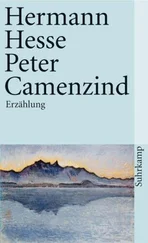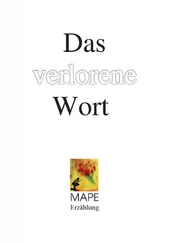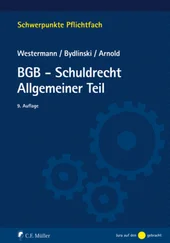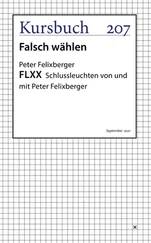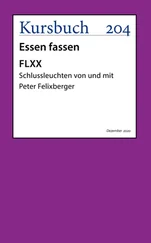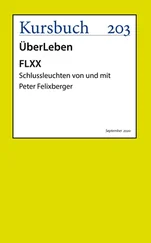Horrified, Atkins sat in the Jimmy as the rats swarmed over it, covering the hood like a moving, gray blanket. In their frenzy, they slammed into the windshield and wiper-blades. Some were trampled by those charging behind them. Nipping and biting each other, many bled from wounds. The vehicle began to sway as waves of rats buffeted the front bumper. Atkins watched some of them scamper across the sunroof.
He tried covering his ears to get rid of the unnerving sound of the rodents clicking their curved yellow teeth. It didn’t work. He could still hear the fierce squeaks and the scraping noise their paws made when they ran across the hood and windshield.
Then, suddenly, it was over.
The last of the rats crossed the road and charged into the opposite field. Atkins watched the deep gouge in the cornstalks move away from him. The rats were frantically racing in a beeline for the wooded hills.
Atkins watched and waited. Nothing was chasing them.
When he reached to turn on the engine, he had to try several times before he could fit the key into the ignition. His hands were shaking too much.
POINT ARGUELLO, CALIFORNIA
JANUARY 9
4:35 P.M.
“DID YOU KNOW CHARLIE RICHTER WAS A NUDIST?”
Elizabeth Holleran grinned and kept working with her trowel as she stood next to Jim Dietz at the bottom of a fifteen-foot trench. She’d heard Dietz tell this one before and still enjoyed it.
“That was back in the late fifties when the Seismo Lab was still in that incredible mansion out in Pasadena,” Dietz said, scraping the wall of the trench smooth with the edge of his trowel. “I think Douglas Fairbanks owned it back in the twenties. Incredible place. Marble floors, paneled offices, private bathrooms for each professor. They used the billiard room for a library. Laid the seismograms out on the pool tables. It had wonderful gardens. Acres of roses. Charlie and his wife Lillian liked to go out there and walk around in the buff. Not a stitch on. Made a lot of the deans nervous as hell.”
“You ever join them, Jim?” Holleran asked.
“He never asked,” Dietz said gruffly. “But then Charlie wasn’t a very friendly guy. Truth is he was a real SOB. You ever hear how he screwed Beno Gutenberg?”
Holleran had heard that one, too, but she kept digging into the hard dirt without saying a word.
“The two guys were colleagues. One day back in the forties, Beno suggested they use a logarithmic scale to plot earthquakes. That was the breakthrough that helped them come up with the new seismograph. Beno and Charlie worked on it together. Charlie took all the credit, and Beno never challenged him on it. He was an easygoing guy and didn’t think it was worth the trouble. Fact is that scale should be called the Gutenberg-Richter scale.”
Dietz took a sip from a jug of water. The floor of the trench was littered with crumpled taco wrappers from his lunch. “Charlie just called it the magnitude scale. But if you wanted to call it the Richter scale, well, that was fine with him.”
Dietz had been one of Richter’s star grad students back in the late 1950s. His stories about the great seismologist were legendary. Holleran and Dietz both taught at Cal Tech’s Seismo Lab. They’d become good friends, working almost shoulder-to-shoulder in the deep trenches they’d dug with a John Deere backhoe. Both wore yellow hard hats as they scraped at the compacted sand and layers of soil. They were searching for the buried record of past earthquakes.
Their dig was forty-five miles northwest of Santa Barbara at a place where the Pacific Ocean met the rocky coastline. A desolate spot known as the Devil’s Jaw, the southwesternmost corner of California. Located on one of the many smaller faults that jut off from the San Andreas, it had produced a magnitude 7.3 earthquake in 1925.
They’d shored the walls of the trench with aluminum plates that resembled planks of plywood and were held in place by steel cross-braces. They lowered the shoring into the trench with a hook and chain then used a hydraulic pump to press the plates up tight against the earthen walls.
Holleran and Dietz had carefully measured the depth of each of the soil layers. The technique was like cutting a slice out of a layer cake. Each slice showed a different geological period and had recognizable colors and texture: the hard, yellow-brown color of sand; grayish red clay; boggy peat. The telltale signs of dry years and floods stood out clearly. So did the jagged imprints of the big earthquakes—several of them in the magnitude 7 range.
Both were sweating heavily. It was early January, but the southern California sun was straight overhead and the temperature was in the mid-seventies. They wore shirts, T-shirts, and soiled work boots. Dietz, a bearded man in his late sixties, was a full professor at the Seismo Lab. a specialist on the San Andreas Fault. Holleran was a thirty-two-year-old assistant professor who’d moved to Pasadena after getting her doctorate from the University of California at Santa Barbara.
Nearly six feet tall and slender, she towered over Dietz, who barely nudged five-foot-six. He liked to stand next to her in a classroom and tell the students they were the long and short of it. Holleran kept her thick blond hair tied in back so she wouldn’t have any trouble with the hard hat.
With painstaking attention to detail, they scoured the walls of the trench for bits of carbon—fragments of ancient leaves and twigs, bits of wood or coal. When they found one, they gingerly placed it in an aluminum foil pouch. Each fragment, no matter how small, was considered “black gold.”
Holleran’s specialty was using these small pieces to date when the fault had ruptured in an earthquake. By using radioactive isotope carbon 14 to date the fragments, she could calculate how old the beds of sediment were. Major earthquakes that had ruptured the fault over the millennia had broken these beds, forming offsets—dark tears and creases that stood out in the exposed soil like marbling in a cake. Holleran measured the lengths of the offsets with a steel tape that hung from the top of the trench.
During the last six months, over vacations and breaks, she and Dietz had dug three similar trenches, each one crossing the fault like the rungs of a ladder. They’d identified six great quakes along that short, but potent fracture in the earth, which branched off the San Andreas Fault fifty miles to the east. The oldest dated to A.D. 235. There had been quakes in the time of Muhammad; around 1215, the year of Magna Carta; and about the time Jamestown was founded in 1607. The dates showed, on average, a moderate to heavy quake every sixty years. The last one had struck nearly seventy-five years earlier, which meant the fault was due for a major rumbling.
Later that afternoon when they’d finished for the day, Dietz and Holleran relaxed on a rocky outcropping that faced the ocean. They sat in the sun and drank cold beer with two of their lab assistants, graduate students who worked as gofers and helped operate the equipment. They shared a cramped trailer that had electrical hookups for a telephone, three computer terminals, and a refrigerator.
Holleran loved this part of California. The desolation of the place, the wild shoreline and plunging cliffs. To the east a sawtooth line of yellow hills retreated into the haze. She liked to walk those hills alone, carrying a couple of sandwiches and a thermos of tea in a day pack. It was hard to believe that Los Angeles was just a two-hour drive straight down Highway 101.
So far that city and the rest of California had been incredibly lucky. The big quakes in 1812, 1838, 1857, 1927, 1940, and 1952, for the most part, had gone off in remote areas such as Devil’s Jaw. The 1906 San Francisco earthquake was another matter entirely. The quake, a magnitude 8.2, and the subsequent firestorm touched off by broken natural gaslines, had almost destroyed the city. More than two thousand people died. If the same thing happened today, the death toll would be staggering.
Читать дальше


